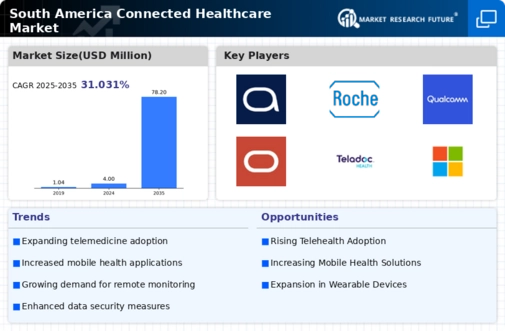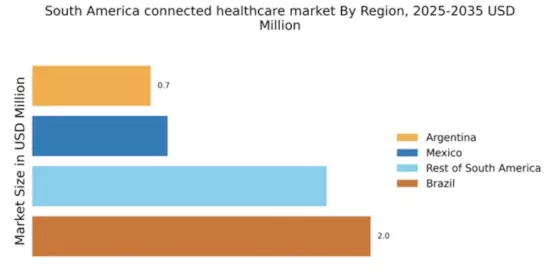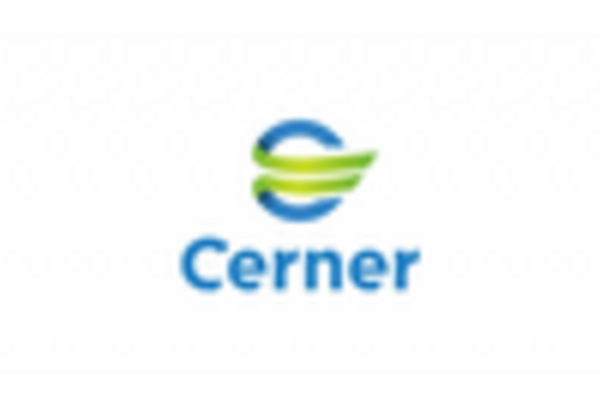Government Initiatives and Funding
Government initiatives play a crucial role in shaping the connected healthcare market in South America. Various national and regional policies are being implemented to promote digital health solutions, with funding allocated to enhance healthcare infrastructure. For instance, investments in telemedicine and electronic health records are projected to reach $1 billion by 2026. These initiatives aim to improve healthcare accessibility and quality, particularly in underserved regions. The connected healthcare market is expected to thrive as governments collaborate with private sectors to foster innovation and streamline healthcare delivery, ultimately leading to better health outcomes for the population.
Rising Health Awareness and Education
There is a growing trend of health awareness and education among the South American population, which significantly impacts the connected healthcare market. As individuals become more informed about health issues and the benefits of technology in healthcare, the adoption of connected devices and services increases. Surveys indicate that around 65% of South Americans are now aware of telehealth options and their advantages. This heightened awareness is likely to drive demand for connected healthcare solutions, as consumers seek more proactive approaches to health management. The connected healthcare market stands to gain from this shift, as it aligns with the increasing consumer preference for personalized and accessible healthcare.
Technological Advancements in Healthcare
Technological advancements are a driving force behind the evolution of the connected healthcare market in South America. Innovations in artificial intelligence, machine learning, and data analytics are transforming how healthcare providers deliver services. For example, predictive analytics tools are being integrated into patient management systems, enhancing decision-making processes. By 2025, it is anticipated that the adoption of AI in healthcare will increase by 40% in the region. These advancements not only improve operational efficiency but also enhance patient outcomes, making the connected healthcare market more attractive to investors and stakeholders.
Aging Population and Chronic Disease Management
The aging population in South America presents a significant driver for the connected healthcare market. As the demographic shifts, the prevalence of chronic diseases such as diabetes and hypertension increases, necessitating effective management solutions. By 2025, it is projected that over 25% of the population will be over 60 years old, leading to a higher demand for connected healthcare services. This demographic trend compels healthcare providers to adopt technologies that facilitate remote monitoring and personalized care plans. The connected healthcare market is likely to expand as it addresses the unique needs of this aging population, ultimately improving their quality of life.
Increasing Demand for Remote Patient Monitoring
The connected healthcare market in South America experiences a notable surge in demand for remote patient monitoring solutions. This trend is driven by the need for continuous health management, particularly for chronic conditions. As of 2025, it is estimated that approximately 30% of patients in South America utilize remote monitoring technologies, which facilitate real-time data collection and analysis. This shift not only enhances patient engagement but also reduces hospital readmission rates, thereby alleviating pressure on healthcare systems. The connected healthcare market is likely to benefit from advancements in telecommunication infrastructure, enabling broader access to these technologies across urban and rural areas.


















Leave a Comment